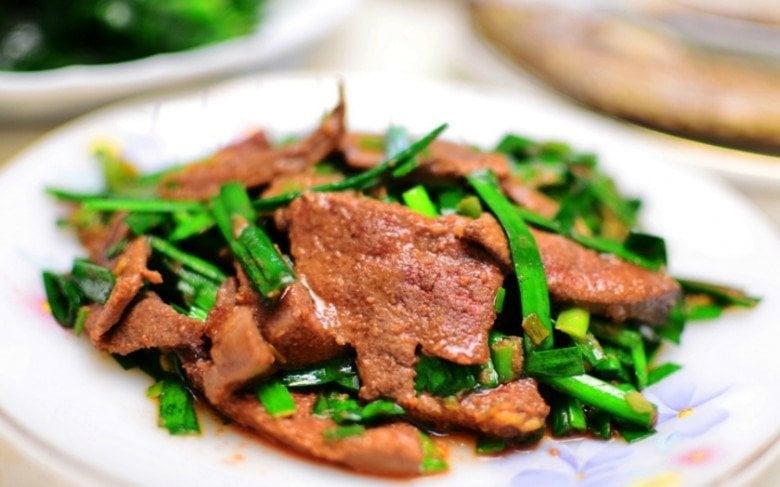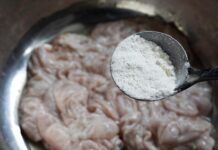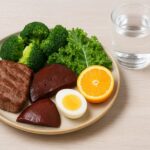Folic acid, also known as vitamin B9, is a type of B-group vitamin that plays a crucial role in cell division and DNA synthesis and repair. This nutrient is especially important for adolescents during their developmental years and for pregnant women.
Pork liver is one of the richest sources of folic acid among a variety of foods. In addition to its blood-enriching properties, pork liver helps boost energy levels and supports liver health. Understanding the nutritional composition of pork liver can help us make the most of this food source. Here are three key points to remember:
1. Nutritional Composition of Pork Liver
Pork liver is packed with high-quality protein, vitamin A, B-group vitamins (especially B12 and folic acid), and minerals such as iron and zinc.
In 100g of pork liver, there is approximately 19.3g of protein, making it an excellent source of this essential nutrient, which helps maintain muscle health and strengthens the immune system.
Vitamin A content is abundant, at around 5,000 micrograms/100g, playing a critical role in vision, skin health, and immune function.
Iron content is approximately 6.9mg/100g, helping to prevent and improve iron-deficiency anemia.
Both vitamin B12 and folic acid levels exceed 500 micrograms/100g, making them key players in red blood cell formation and anemia prevention.

2. Unique Role of Folic Acid
Folic acid is a water-soluble vitamin that is crucial in cell division and DNA synthesis. As such, it is incredibly important for pregnant women. Adequate folic acid intake can help prevent neural tube defects in fetuses and reduce the risk of congenital abnormalities.
Additionally, folic acid aids in red blood cell production, preventing anemia, and has positive effects on cardiovascular health. Research indicates that folic acid helps lower homocysteine levels, a factor associated with an increased risk of cardiovascular disease. Therefore, regardless of age, the body requires a consistent supply of folic acid.
3. Guidelines for Consuming Pork Liver
While pork liver is highly nutritious, it should not be consumed excessively due to its relatively high cholesterol and vitamin A content. Overconsumption of vitamin A can lead to toxicity, resulting in symptoms such as headaches, nausea, and dry skin.
Recommendation: It is suggested to eat pork liver once to three times a week, not more frequently.
Pork liver contains approximately 300mg of cholesterol/100g, so individuals with cardiovascular concerns or high blood cholesterol should exercise moderation.
When preparing pork liver, opt for fresh liver and thoroughly clean it to eliminate any potential toxins or bacteria. Ensure that the liver is thoroughly cooked to maintain food safety standards.
To enhance iron absorption, pair pork liver with vitamin C-rich vegetables like tomatoes or bell peppers. Avoid combining it with high-fat or high-cholesterol foods to minimize cardiovascular strain.
The Golden Key to Nurturing Healthy Blood: The Overlooked Simple Secret
“Blood is life” is a well-known saying, but not many understand the true essence of maintaining healthy blood flow and its nourishment to the body. The secret to a well-nourished circulatory system is surprisingly simple and can be easily implemented at home – it’s just a matter of knowing where to start.






































